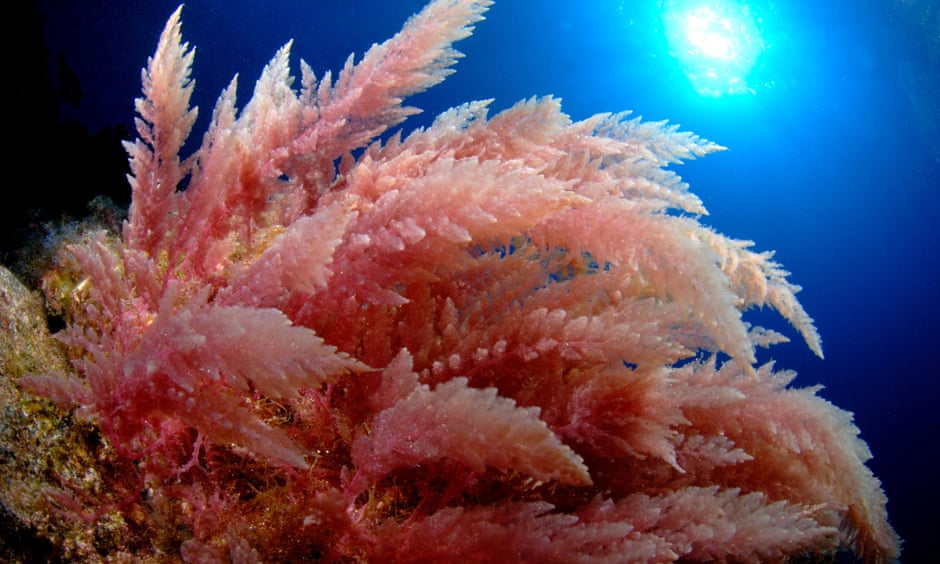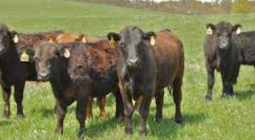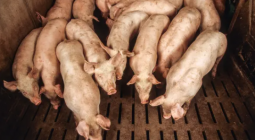Kowbucha, seaweed, vaccines: the race to reduce cows’ methane emissions
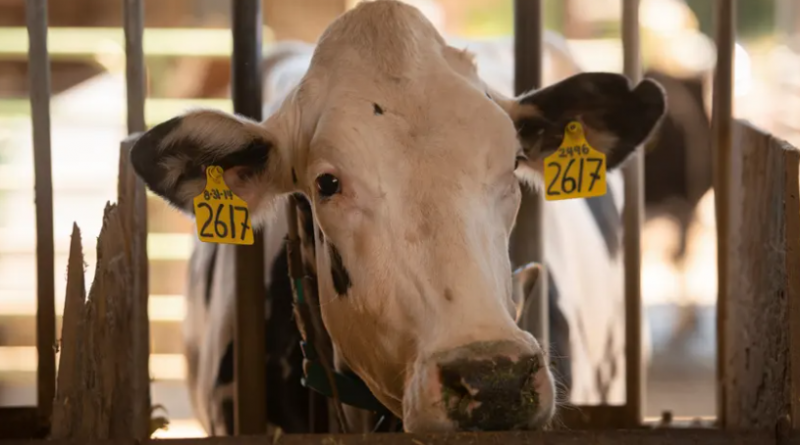
Agriculture is the largest anthropogenic source of this gas, accounting for about 40%, leading innovators to offer new solutions to tackle its bovine source
In 2017, Canadian cattle farmers in Alberta started slipping a special ingredient into their animals’ feed. The cows remained oblivious – their forage tasted no different – but by munching on, they had been enlisted into the fight against the climate crisis.
The feed, called Bovaer, contained 3-NOP, an organic compound that inhibits cows’ methane production. Farmers ultimately fed the enriched fodder to 15,000 animals and collectively cut their methane emissions by 30% on average and up to 80%. In September, the ingredient was approved for use in Brazil, the world’s second-largest producer of beef.
3-NOP is one of several methods being developed to reduce cow methane. Methane is shorter-lived in the atmosphere compared with other greenhouse gases, but while it’s there it packs a punch, with a warming effect more than 30 times greater than carbon dioxide.
Agriculture is the largest anthropogenic source of this gas, accounting for about 40% – and livestock generate about 32% of that, attributed largely to the planet’s more than 1 billion cattle, who typically belch it out.
Methane’s enormous potency means that limiting how much reaches the atmosphere “presents a huge opportunity for us to reduce our contribution to global warming in the short term”, said Bojana Bajželj, a researcher in food sustainability science at the Swedish University of Agricultural Sciences.
Governments are taking note. In September, the US and the EU launched a joint pledge to cut methane emissions by at least 30% by 2030. Innovators are offering up a fleet of new solutions to tackle its bovine source – from 3-NOP to vaccines. But as these innovations attract more attention and funding, experts are concerned they may distract from other, more systemic ways to reduce farming’s footprint.
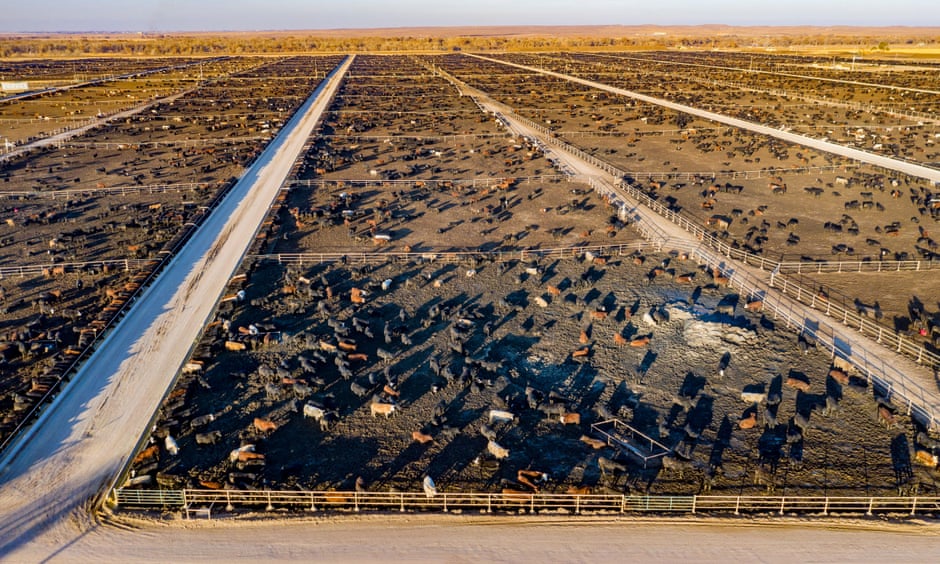
Mark van Nieuwland, the program director for Royal DSM, the Dutch bioscience company behind the Bovaer, thinks cattle can be exceptionally powerful tools to tackle the climate crisis. “Our invention reduces methane within 20 minutes after use, so it’s probably the most direct possible impact you can have on the climate,” he said.
It works by inhibiting the enzyme activity of methanogens, the microbes that break down food in a cow’s rumen and generate methane as a metabolic byproduct. Adding tiny amounts to a cow’s daily diet can reduce methane production by between 30% and 90% depending on the feed type, research shows, with no impact on the animals’ appetites or the flavor of dairy or meat. “It’s a no-regrets move to do something about methane,” van Nieuwland said. Bovaer is now approved in Chile and Brazil, and DSM anticipates approval from several European nations later this year, and the US – the world’s largest beef producer – in 2022.
Researchers are also exploring a methane-busting compound from an unlikely source: the feathery fronds of Asparagopsis seaweeds. Many of these widely occurring seaweed species contain the compound bromoform, which similarly blocks methanogens’ enzymatic reactions when incorporated into feed.
Ermias Kebreab, a researcher on the environmental impact of livestock at the University of California, Davis, has found that sprinkling 85g (3oz) of seaweed a day into a cow’s feed cuts methane production by more than 80%. The amount is low enough that cows can’t detect it and the meat carried no aftertaste.
“You’re using something that doesn’t need land, freshwater, or fertilizer to grow, and it reduces methane emissions by quite staggering amounts. It’s a win-win solution,” Kebreab said.
Asparagopsis farms are now springing up off the shorelines of Australia, Hawaii, and North America, as various startups see its potential including Blue Ocean Barns, a US company that has partnered with a commercial dairy farm to trial its Asparagopsis-infused feed.
Most of these farms are small-scale enterprises and there are still obstacles to scaling up production, including, according to 2020 research paper, the need for much more scientific research on seaweed’s potential risks and benefits. These include the potential toxicity to cows of some of the substances in seaweed and the environmental implications of growing seaweed at such a large scale.
These innovations all feed into a race by meat and dairy businesses to reduce their climate impact to appease concerned consumers and investors. Just 20 livestock companies produce more emissions than Germany, Britain or France, according to a report by environmental campaigners.
“You’re seeing much more industry involvement,” said Harry Clark, director of the New Zealand Agricultural Greenhouse Gas Research Centre. New Zealand-based dairy producer Fonterra, for example, is developing a methanogen-targeting feed additive called Kowbucha – a reference to the fermented drink kombucha – to reduce its emissions, which contribute about 20% to New Zealand’s overall footprint.
Clark helms a multimillion-dollar government- and industry-funded methane research division which investigates solutions to bring down New Zealand’s livestock methane emissions.
One program involves researchers working to identify livestock that are naturally low-methane emitters for future breeding. Others are developing an anti-methane vaccine that produces methanogen-targeting antibodies. This has shown success in laboratory conditions, but in a cow’s gut – churning with gastric juices and food – the antibodies struggle to latch on to the right microbes. Despite this, research continues. “We’re now going through a massive process of elimination to try to find better antibodies,” Clark said. “We’ve nearly doubled this [research] program in size because we feel it has such potential.”
Rather than stopping methane at source, others want to catch it before it’s released. UK company Zelp has created a mask that it says can neutralize about 50% of methane as cows belch it out. It’s been backed by the food giant Cargill, which expects to start distributing the masks to European dairy farmers in 2022.
There are dozens more livestock methane interventions under development, according to a recent assessment co-authored by Ermias Kebreab. But only a handful – including Bovaer and Zelp – have reached the market. Even here, there’s still fine-tuning to be done. For instance Bovaer needs to be constantly in the rumen to work, meaning it may be less practical for free-ranging cattle whose feeding is less controlled (van Nieuwland said DSM is working to develop slow-release 3-NOP to help with this).
Other solutions may still be years from commercialization. There’s also the question of how to scale these up cost-effectively without putting extra pressure on farmers already operating on slim margins. “We should try to steer these transitions in a way that doesn’t hurt their livelihoods,” said Bajželj. Enabling farmers who use methane reduction methods to pay less tax or to sell their products at a premium are measures that could help, she said. Figuring out the right mix of policies and incentives to get farmers to use them is “a debate that’s still playing out”, Clark said.
There’s also debate about the value of investing so much money, time, and business interest in these innovations when they don’t entirely solve agriculture’s climate problem. “It’s not just about climate change and greenhouse gas emissions. It’s about losing natural habitat,” Bajželj said. Pastureland and crop production for livestock use up 77% of the planet’s farmed land (but livestock produces less than 20% of global calories), with consequences for ecosystems and wildlife. Land-use change also releases carbon from soils.
Reducing consumption of dairy and meat may be a more holistic solution, said Bajželj. But if we’re going to take that approach, “the focus should absolutely be on western countries, because that’s where meat consumption is the highest. There’s been quite a strong consensus on that for a little while”, she added. In lower-income countries, meat and dairy are often primary sources of nutrients and food choice is a luxury that many lack.
Methane reduction “is just a part of the puzzle”, said Bajželj, who is wary that the fleet of new methane-cutting innovations will steal the limelight from more complex but crucial approaches. But the way forward is to tackle this challenge from all angles, she said. Increasing GDP and a rising global population point to an increase in meat consumption in the future, suggesting cows will play a role in modern diets for the foreseeable future.
If grocery shelves one day stock “methane-free” steak, it won’t exactly be an excuse to eat as much meat as we want, but it will be an indication that the burps of the cow it came from were less of a climate nightmare.
30 September 2021
